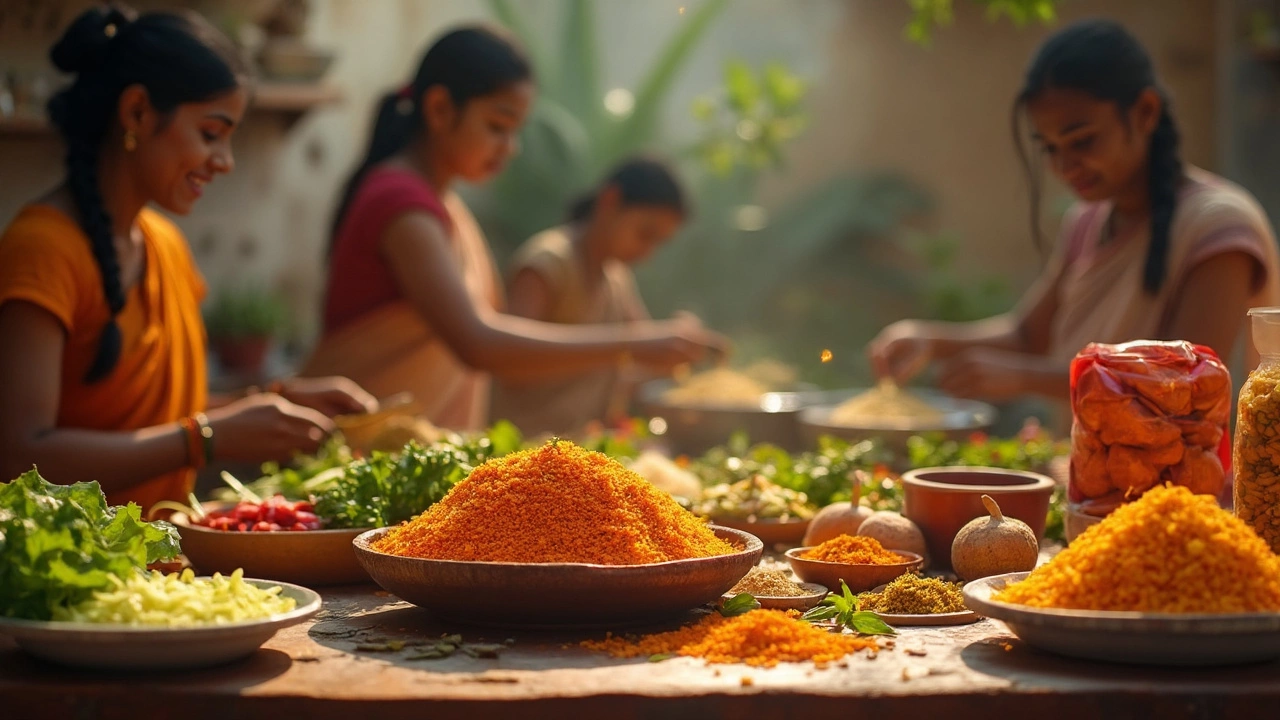Grab a box of snacks or a loaf of bread and flip it to the ingredient list. Some items are tough to pronounce, while others are as basic as flour or salt. But did you ever wonder what really happens to food before it hits your plate? Processing doesn’t just mean making it last longer or look prettier—sometimes it transforms basic ingredients entirely. And no, it’s not all bad. In fact, some food processing is necessary, helpful, or even life-saving. Just ask anyone who’s eaten frozen veggies out of season or enjoyed a glass of milk in July without worrying about getting sick. But which types of processing matter most? Here’s the scoop on the three major types of food processing, what they really mean, and how they show up everywhere—from your freezer to your favorite restaurant.
Primary Food Processing: From Raw Harvest to Edible Ingredient
Think about grain fields, dairy farms, and orchards—that’s where primary processing kicks in. This first step takes food straight from nature and makes it safe, edible, and ready to use. Imagine wheat kernels just threshed from a field; nobody’s going to chew those straight up. Instead, they’re cleaned and milled in factories to become flour, the heart and soul of bread, pasta, and pancakes. It’s not just about grains. With fruits and veggies, primary processing means washing, sorting, and chopping (sometimes even freezing or canning) to lock in freshness and stop spoilage. Milk is a superstar here, too—raw milk has to be pasteurized (heated just enough to kill harmful germs) and sometimes homogenized so the cream doesn’t float to the top.
The fun thing? Most foods we buy, even those that look basic, are products of primary processing. Take table salt. It starts as minerals scooped up from salt mines or seawater, then gets purified. Meat? Animals get slaughtered, and the carcasses go through chilling, cutting, and packaging—no spices, no additives, just making it safe for you to cook. Fishermen’s catch travels a similar road: it’s gutted, cleaned, and often frozen quickly to hold off spoilage. Even bottled water, which seems like the simplest thing, goes through filtering and sometimes mineral adjustments before hitting the shelves.
Primary processed foods aren’t the stuff that usually gets the side-eye when people talk about “processed food” being bad. Think eggs, raw nuts, bagged greens, or those crunchy baby carrots. They’re as close to their natural state as possible, just touched up for safety and convenience. Still, some processes—say, bleaching flour—can nudge the nutrition down a notch. But mostly, the goal here isn’t long shelf life or wild flavor twists, but keeping the nutritive value close to how it started on the farm.
Let’s look at some real-world numbers. According to the Food and Agriculture Organization (FAO), global wheat flour production hit over 400 million tons in 2023, and nearly every bag comes from a plant that sorts, cleans, and mills the grain in line with primary processing rules. Over 90% of milk in the European Union is pasteurized before reaching stores. So, unless you’re literally plucking your food from the earth or raw-milking a goat in your backyard, you’re almost always eating foods that’ve gone through at least this step.
Here’s a tip: If you want to load up your diet with “minimally processed foods,” focus on those from primary processing—think rice and beans, not cheese puffs.

Secondary Food Processing: Creating Staples and Flavors
Now, here’s where the kitchen magic—and sometimes, the arguments—begin. Secondary processing brings us staples that make daily meals possible: bread, cheese, sourdough, pasta, yogurt, sausage, jams, and so much more. This stage isn’t just about taking raw stuff and packaging it. It’s about combining, altering, or fermenting ingredients to create the food styles we crave.
Bread is a classic case. It starts with flour, water, yeast or sourdough starter, and maybe some salt or sugar. Each loaf comes from mixing, proofing (letting dough rise), baking, and, for some, slicing. Cheese is even more fascinating: milk is curdled using rennet and bacteria, then separated into curds and whey, pressed, aged, and sometimes salted or flavored. You can compare that to eating a raw cucumber or munching a pickle—not the same experience, even though the difference between the two foods is all about secondary processing steps.
Did you know the average American consumes about 79 pounds of sweeteners annually (according to USDA figures for 2024), almost all of it from secondary-processed foods like soda, bread, and desserts? And people around the globe chomp through 25 billion sandwiches a year, with ingredients like bread, deli meats, and cheese all being secondary processed. No need to demonize it, either—these techniques have fueled culinary creativity for centuries. French baguettes, Italian salami, Greek yogurt—the world’s cuisine wouldn’t exist without this level of transformation. Fermentation alone is an ancient trick that not only creates new flavors but can boost nutrition, add gut-friendly bacteria, and sometimes even preserve ingredients without fridges or freezers.
Of course, this stage often mixes up more than just flavors. Sometimes, it introduces things like added sugars, extra salt, and preservatives to keep those foods tasty and safe. This is where moderation starts to matter. You’ll notice sodium numbers go up in packaged breads or deli meats. Suddenly, something simple like a wheat kernel gets a delicious (but saltier) new life. Nutrition-wise, secondary processing can dial nutrients up or down: fortifying cereal with vitamins, but maybe losing some fiber along the way.
- Fresh bread, cheese, tofu, canned beans
- Jams, syrups, sauces, some snack bars
- Pasta, tortillas, cured meats, smoked fish
Want healthier choices? Scan the ingredient label. The fewer extras you see, the closer it is to its natural form. Watch out for surprise add-ins—sometimes sugar, salt, or oils get into foods you wouldn’t expect, like tomato sauce or crackers. Go for foods where you recognize everything on the label and you’re usually in good territory for your daily eating.

Tertiary Food Processing: The Engine of Convenience and Ultra-Processed Foods
This is the stage where science and industry really step in—sometimes for the better, sometimes changing the food landscape in ways that are still being debated. Tertiary processing churns out what’s usually known as “ultra-processed foods”—think frozen pizza, cookies loaded with flavors and colors, instant noodles, chicken nuggets, boxed breakfast cereals, sugary sodas, and snack cakes. Here’s the kicker: these products often combine both primary and secondary processed ingredients with industrial techniques, additives, artificial colors, flavors, and, in some cases, even edible coatings to make foods hyper-palatable, shelf-stable, and transport-friendly.
Take a look at a typical supermarket aisle. According to a 2023 study from the Global Health Data Exchange, ultra-processed foods made up nearly 57% of caloric intake for adults in the US and 49% in Australia. That’s wild, right? Even seemingly innocent choices like flavored yogurt cups or energy bars often get a tertiary makeover—extra sugars, stabilizers, flavors, and thickeners. Even baby foods are not exempt from this trend, with jarred meals and puffs boasting ingredient lists as long as a novella.
The big draw here is convenience. Tertiary-processed foods are usually ready-to-eat, needing little more than a microwave or a quick pour out of the package. Suddenly, eating becomes less about kitchen time and more about instant satisfaction. But that’s where the trade-offs show up. Studies clinch the link between high intake of ultra-processed foods and health woes like type 2 diabetes, obesity, cardiovascular problems, and gut issues. One 2024 review out of King’s College London crunched data from over 100,000 participants and found that folks eating the most *processed foods* had double the risk of developing metabolic syndrome compared to those who stuck to mostly minimally processed fare.
If you want a better handle on what’s in your pantry, look out for a few red flags on food labels: ingredients you can’t pronounce, numbers in the list (like Red 40 or BHT), and stuff you wouldn’t even find in a home kitchen. The nutrition label is your best tool. If foods are high in added sugars, saturated fats, or sodium, and low in fiber or protein, it’s a sign you’re deep in the tertiary zone.
For a quick side-by-side, check the table below:
| Type | Examples | Main Nutritional Impact | Typical Additives |
|---|---|---|---|
| Primary | Raw nuts, milk, fresh veggies | Close to original; minimal loss | Usually none |
| Secondary | Bread, cheese, tofu, canned beans | Some added salt/sugar; mix of benefits/downsides | Salt, sugar, vinegar, enzymes |
| Processed Foods | Chips, cookies, soda, instant noodles | Energy dense; higher in sugars/fats/salt, less fiber | Preservatives, colors, flavors, thickeners |
Not all tertiary-processed options are the enemy, though. There are versions with less sugar, more fiber, or added nutrients, aimed at helping busy people fuel up fast. Just be honest with yourself about how often you’re picking these foods and whether you’re balancing them with plenty from the other categories.
So here’s the deal: food processing ranges from gentle cleaning to wild industrial transformations. The next time someone says “processed food,” you know the whole story—and you’ve got the basics to choose what works for your taste buds, wallet, and health.






